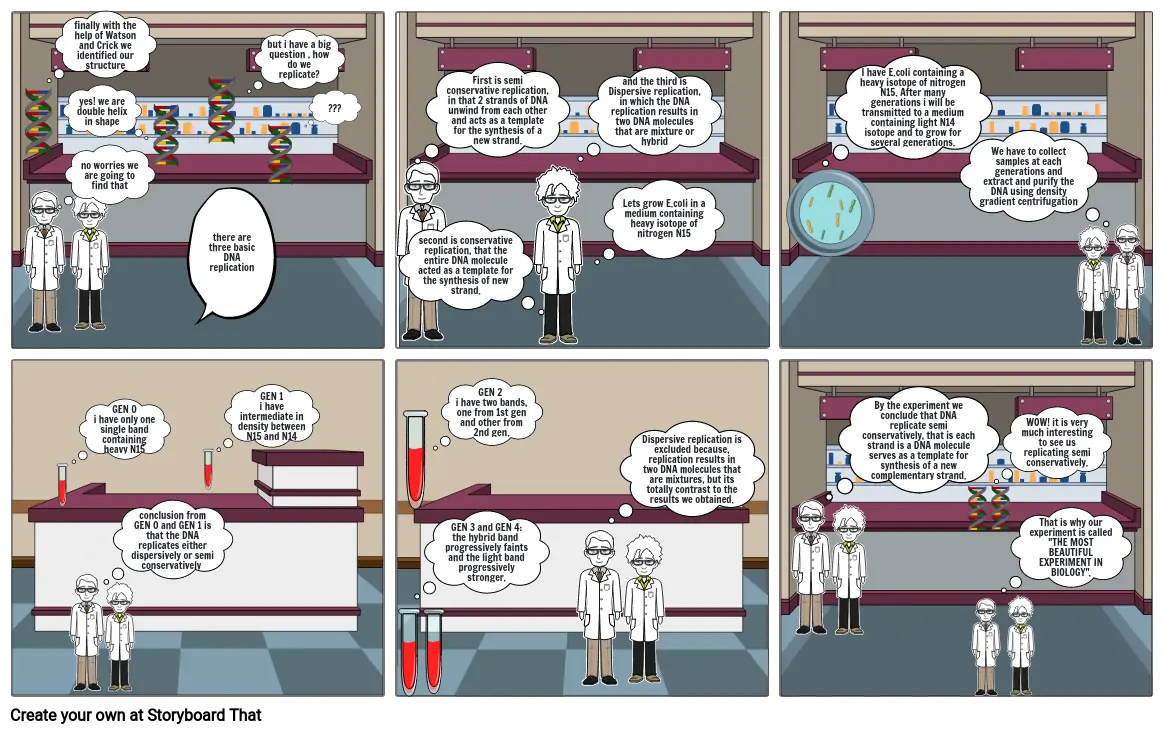MESELSON AND STAHL EXPERIMENT - STORYBOARD

Siužetinės Linijos Tekstas
- finally with the help of Watson and Crick we identified our structure
- no worries we are going to find that
- yes! we are double helix in shape
- there are three basic DNA replication
- but i have a big question , how do we replicate?
- ???
- second is conservative replication, that the entire DNA molecule acted as a template for the synthesis of new strand.
- First is semi conservative replication, in that 2 strands of DNA unwind from each other and acts as a template for the synthesis of a new strand.
- and the third is Dispersive replication, in which the DNA replication results in two DNA molecules that are mixture or hybrid
- Lets grow E.coli in a medium containing heavy isotope of nitrogen N15
- I have E.coli containing a heavy isotope of nitrogen N15. After many generations i will be transmitted to a medium containing light N14 isotope and to grow for several generations.
- We have to collect samples at each generations and extract and purify the DNA using density gradient centrifugation
- GEN 0i have only one single band containing heavy N15
- conclusion from GEN 0 and GEN 1 is that the DNA replicates either dispersively or semi conservatively
- GEN 1i have intermediate in density between N15 and N14
- GEN 3 and GEN 4:the hybrid band progressively faints and the light band progressively stronger.
- GEN 2 i have two bands, one from 1st gen and other from 2nd gen.
- Dispersive replication is excluded because, replication results in two DNA molecules that are mixtures, but its totally contrast to the results we obtained.
- By the experiment we conclude that DNA replicate semi conservatively, that is each strand is a DNA molecule serves as a template for synthesis of a new complementary strand.
- WOW! it is very much interesting to see us replicating semi conservatively.
- That is why our experiment is called "THE MOST BEAUTIFUL EXPERIMENT IN BIOLOGY".
Sukurta daugiau nei 30 milijonų siužetinių lentelių

